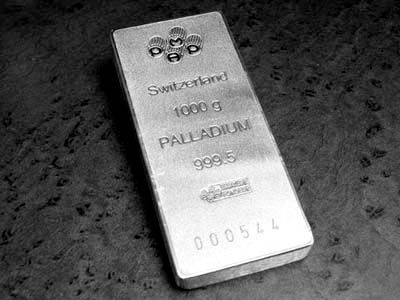Nornickel believes that new technologies it is developing, including for the synthesis of hydrogen, will create demand for palladium in China equal to up to 15% of current consumption, a top executive told Reuters.
Demand from makers of internal combustion engine (ICE) vehicles who use palladium in exhaust pipes to neutralize emissions – which accounts for 80% of the metal’s global use – is set to shrink due to the rise of electric vehicles.
Nornickel, the world’s largest palladium producer, estimates that traditional demand from China, the largest consumer of the metal, will fall by 29% to 47 tons by 2030 because the country will be making fewer ICE vehicles.
According to the World Platinum Investment Council (WPIC), the decline in ICE vehicle production will result in a market surplus of palladium in 2026. Global prices for palladium are down 10% this year after a 39% slump in 2023.
Together with Chinese universities and industrial partners, Nornickel is testing several technologies in areas such as hydrogen production and water purification that involve using palladium, in the hope of boosting demand.
“We expect that these projects have the potential for at least 15 tons of long-term additional demand for palladium and will gradually start to be reflected in market analysts’ forecasts,” said the company’s Vice President Vitaly Busko.
China is the world’s largest producer of hydrogen, which is part of the country’s green transition strategy and is used in production of ammonia fertilisers and methanol as well as in oil refining.
“In terms of hydrogen and green chemistry, China is developing much faster than the rest of the world. In this sense, the interest is significant,” Busko said.
Nornickel currently produces over 40% of the world’s palladium and estimated global demand for the metal in 2023 at 302 tons, with a 22% market share for China. Analysts estimate a global surplus of the metal of 20-40 tons by 2030.
“Our goal is to create new demand for 40-50 tons,” Busko said.
He said the company was working with at least five Chinese companies to develop the new technologies and that 80% of China’s palladium market was currently supplied by Nornickel.
He expects new demand for palladium equal to 5-10 tons to emerge in 2026-27.
Apart from China, Nornickel is looking to develop new areas for palladium usage in the Middle East, Brazil and Malaysia. Nornickel is not directly hit by Western sanctions against Russia but has pivoted logistics and over 52% of sales to Asia.
The company is also seeking to boost palladium usage at home and plans to supply up to 0.4 tons of the metal for fiberglass production in Russia. It also expects Russian firms to start using palladium in water purification.
In 2024, the company plans to produce 82-85 tons of palladium.
